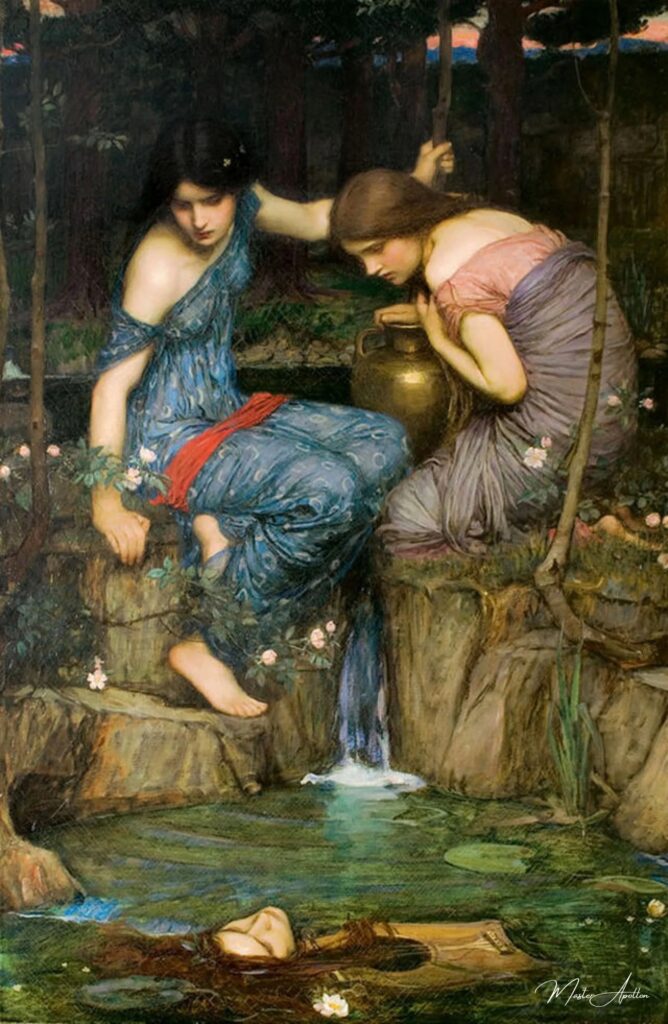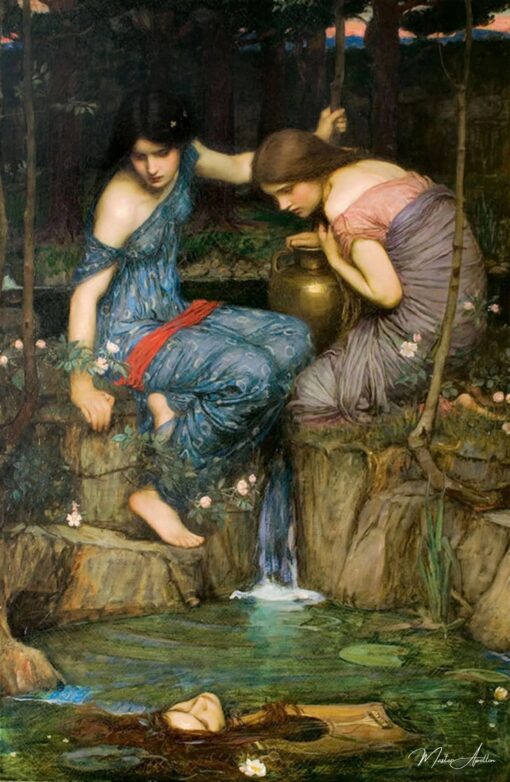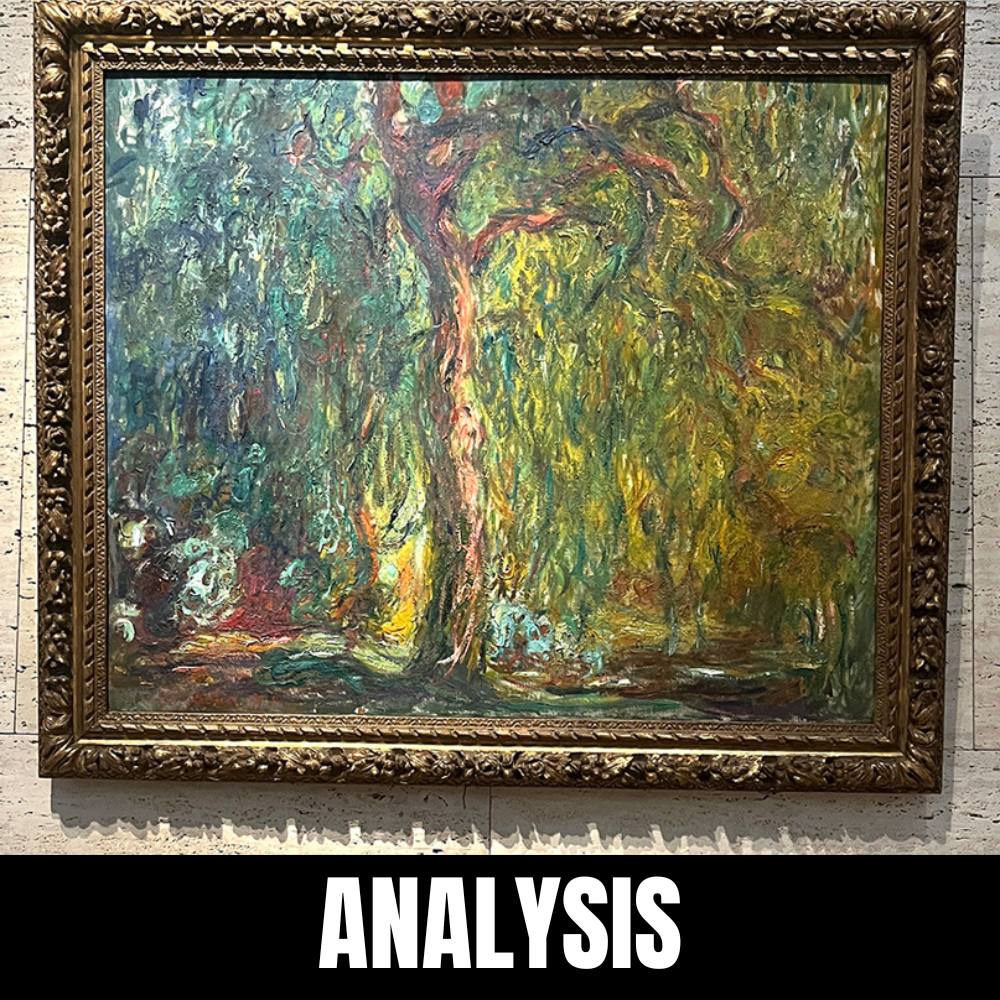Your cart is currently empty!

Nymphs finding the Head of Orpheus – John William Waterhouse
Immerse yourself in the enchanting world of classical art with our highest quality oil painting reproduction of “Nymphs Finding the Head of Orpheus” by John William Waterhouse. This exquisite piece captures a poignant moment steeped in myth and beauty, where ethereal nymphs, draped in flowing garments, discover the severed head of Orpheus, a symbol of love and loss.
Each brushstroke is meticu…
Tragedy and Beauty: Waterhouse’s ‘Nymphs Finding the Head of Orpheus’
A Lyrical Tragedy
In 1900, John William Waterhouse completed one of his most haunting and poetic works, “Nymphs Finding the Head of Orpheus.” This masterpiece, now housed in a private collection, captures a moment of profound discovery and sorrow from classical mythology, rendered with the artist’s characteristic blend of beauty and melancholy.
The Mythological Context
The painting depicts the aftermath of one of mythology’s most tragic tales. Orpheus, the legendary musician whose songs could charm nature itself, meets a violent end at the hands of the Maenads, followers of Dionysus who tear him apart in their frenzy. His severed head, still capable of song, floats down the river Hebrus along with his lyre.
The Moment of Discovery
Waterhouse chooses to capture the precise moment when two nymphs discover Orpheus’s head among the reeds. It’s a scene that perfectly embodies his ability to find beauty in tragedy:
- The nymphs’ expressions blend horror with fascination
- Orpheus’s head retains its beauty even in death
- The lyre floats nearby, a symbol of his enduring artistry
- The natural setting provides both beauty and melancholy
Compositional Mastery
The painting’s composition demonstrates Waterhouse’s technical brilliance:
The circular arrangement of the nymphs bending over the water creates a sense of intimate discovery. Their poses mirror each other, forming a protective circle around their tragic find. The head of Orpheus becomes the focal point, drawing the viewer’s eye to the center of this emotional vortex.
The water’s surface serves multiple purposes:
- It reflects the sky, creating depth
- It provides a natural frame for Orpheus’s head
- Its ripples suggest both movement and music
Symbolic Elements
The painting is rich with symbolic details:
- The lyre, floating nearby, represents the endurance of art beyond death
- The reeds and water plants suggest nature’s role as both witness and preserver
- The nymphs’ youth and beauty contrast with the tragedy they’ve discovered
- The peaceful setting contradicts the violence of Orpheus’s death
Color and Light
Waterhouse’s use of color and light creates a dreamlike atmosphere:
- Soft, natural light bathes the scene in a gentle glow
- The water reflects and refracts light, creating subtle patterns
- The nymphs’ robes provide warm color against the cool tones of water and sky
- Shadow and light play across the faces, enhancing the emotional impact
Victorian Sensibilities
Created at the turn of the century, the painting reflects Victorian fascination with:
- Classical mythology
- The intersection of beauty and death
- Female figures as witnesses to tragedy
- The power of art and poetry
Technical Achievement
The painting showcases Waterhouse’s masterful handling of:
- Complex reflections in water
- Multiple figure composition
- Subtle emotional expression
- Natural elements and textures
Emotional Resonance
What makes this painting particularly powerful is its emotional complexity:
- The nymphs’ reactions feel genuine and untheatrical
- The scene captures both horror and tenderness
- The overall mood suggests reverence for art and beauty
- The tragedy is presented with dignity rather than sensationalism
The Power of Witness
The nymphs serve as more than mere discoverers; they become witnesses to:
- The endurance of art beyond death
- The price of divine jealousy
- The connection between beauty and tragedy
- The role of nature in preserving memory
Contemporary Relevance
The painting continues to resonate with modern viewers through its exploration of:
- The relationship between art and mortality
- The role of witnesses to tragedy
- The endurance of beauty in the face of violence
- The power of art to transcend death
Conclusion
“Nymphs Finding the Head of Orpheus” represents Waterhouse at his most poetic and profound. Through his masterful technique and deep understanding of mythology, he creates a work that transcends its classical source material to speak about universal themes of art, death, beauty, and witness.
The painting’s enduring power lies in its ability to find beauty in tragedy without diminishing the sorrow at its heart. More than a century after its creation, it continues to move viewers with its delicate balance of horror and grace, reminding us of art’s power to transform even the darkest moments into something profound and beautiful.
John William Waterhouse
John William Waterhouse was a British painter known for his enchanting depictions of mythological and literary themes, characterized by rich colors, emotional depth, and a focus on female figures that often evoke a sense of longing and beauty.





Leave a Reply